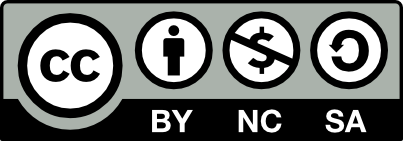Child restraint systems, your advice in the practice
Article Details
Authors
Publication Information
Keywords
traffic accidents
children
pediatricians
Abstract
Objective. Describe the knowledge and practices of the use of child restraint systme (CRS) by pediatricians in Western Mèxico.
Introduction. In Mèxico, inuries caused bytraffic accidents are the first cause of death in the age group pf 5 to 14 years. CRS reduce the chances of death by up to 70%. In Mèxico about 7% of children under 10 use it and 17% children under 5 years. Pediatricians can give advice in the proper use and motivate their use.
Material and methods. Descriptive cross-sectional study. A questionnaire was designed with the identification data, demographics, knowledge, practices and professional counseling on CRS. It was self-applied to pediatricians.
Results. 194 paticipants were included, 72% were women. 93% said that injuries can be avoided transporting the child in a CRS. The place to transport a child was in the back seat 30%. When a newborn leaves the hospital 84% advised to use, as the children age advances, pediatricians decrease counseling.
Conclusions. Pediatricians are convinced of the usefulness of CRS in prevention. There is greater sensibility for the safety on the child according to his age. It is important that pediatricians promote in use during medical consultation.
Graph - Number of readers per month
Downloads
How to Cite
License

This work is licensed under a Creative Commons Attribution-NonCommercial-ShareAlike 4.0 International License.
 |
This work is licensed under Creative Commons Attribution-NonCommercial-ShareAlike 4.0 International (CC BY-NC-SA 4.0) |
| Copyright notice |
| Authors will retain their copyright and assign to the journal the right of first publication of their work, which will be simultaneously subject to a Creative Commons Attribution-Noncommercial-ShareAlike 4.0 International license (CC BY-NC-SA 4.0) that allows third parties to share the work as long as its author and its first publication in this magazine are indicated. | |
| Authors may adopt other non-exclusive license agreements for the distribution of the version of the published work (eg: deposit it in an institutional repository or publish it in a monographic volume) provided that the initial publication in this journal is indicated. | |
| Authors are allowed and recommended to disseminate their work through the internet (eg, in institutional telematic files or on their website) before and during the submission process, which can lead to interesting exchanges and increase citations of the published work. (See The effect of open access). |
| About the Creative Commons license |
|
|
You are free to: |
| Share — copy and redistribute the material in any medium or format. | |
| Adapt — remix, transform, and build upon the material. | |
| The licensor cannot revoke these freedoms as long as you follow the license terms. |
Under the following terms: |
| Attribution — You must give appropriate credit, provide a link to the license, and indicate if changes were made. You may do so in any reasonable manner, but not in any way that suggests the licensor endorses you or your use. | |
| NonCommercial — You may not use the material for commercial purposes. | |
| ShareAlike — If you remix, transform, or build upon the material, you must distribute your contributions under the same license as the original. |
|
| No additional restrictions — You may not apply legal terms or technological measures that legally restrict others from doing anything the license permits. |

